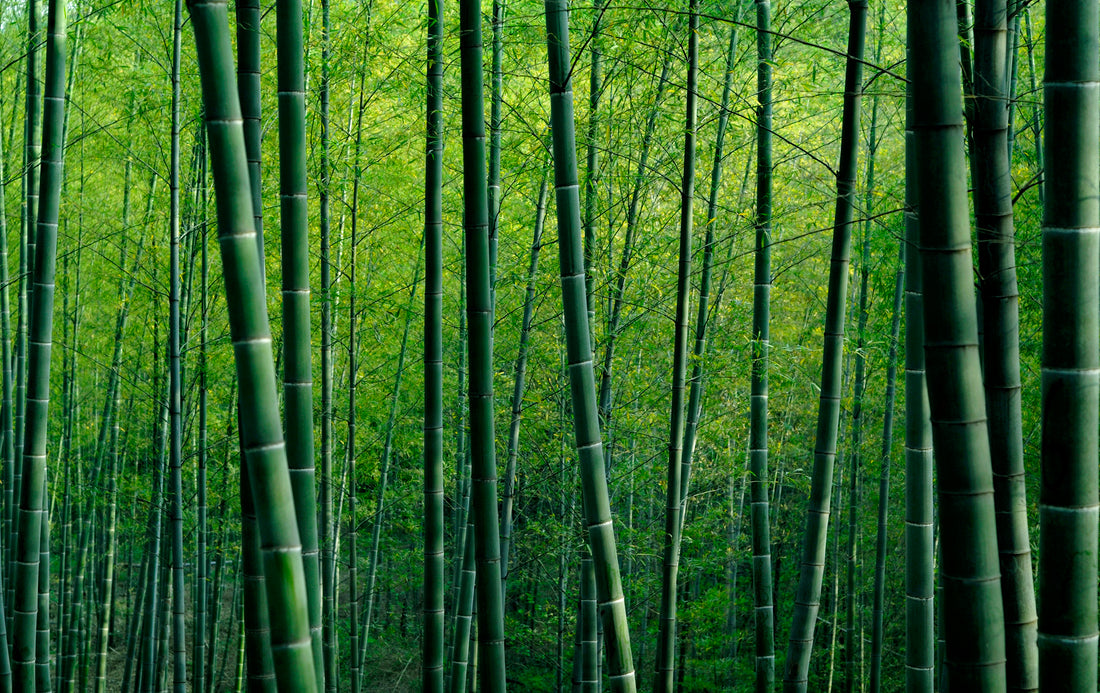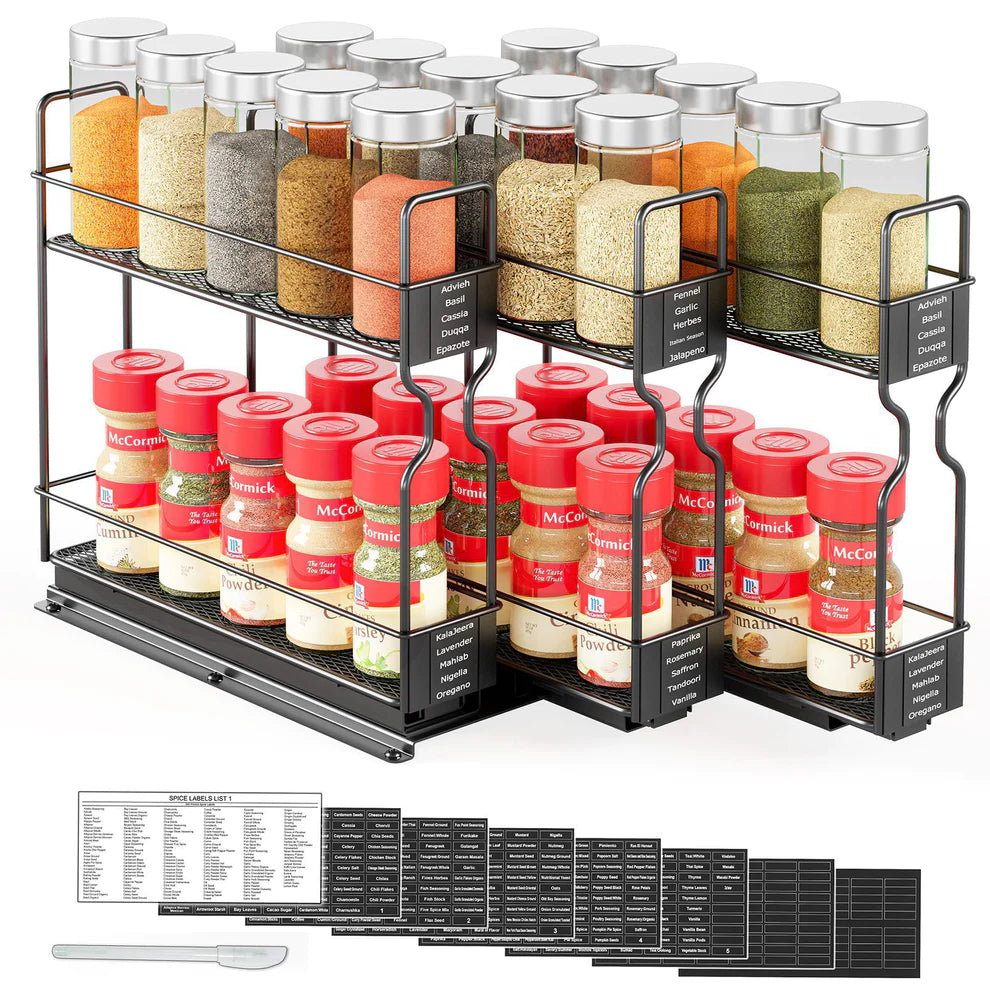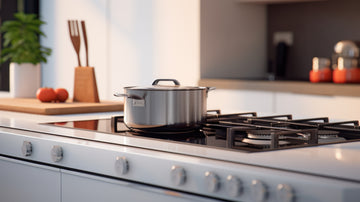
Nature's Answer to Clutter: The Best Guide to Bamboo Wood Storage Solutions
Table of Contents
By SpaceAid
In this post, we reveal everything you need to know about bamboo wood organizing products, including their meaning, common manufacturing process, comparison with other materials, maintenance, and some DIY ideas.
Introduction
Bamboo, as a natural composite material, has been utilized by mankind since the Neolithic period. In modern times, bamboo products have gained immense popularity due to their natural origins and unique distinctive aesthetic advantages. Read our complete guide to find out all you need to know about bamboo organizers.
Properties of bamboo
Eco-friendly and Sustainable
Considering the environmental perspective, bamboo emerges as an exemplary sustainable material. Unlike other resources, bamboo doesn't meet its demise upon harvesting or cutting; rather, it swiftly regenerates, often within a year's time. Its rapid root growth plays a vital role in averting soil erosion and can effectively rejuvenate depleted soil. Bamboo even thrives in nutrient-deficient soil. What's more, its remarkable inherent antibacterial properties eliminate the need for pesticides during its growth cycle. What sets bamboo apart is its remarkable biodegradability. Unlike plastics, it returns to the earth and doesn't persist for hundreds of years, ensuring a more sustainable future.
Cultural Significant
In Chinese, bamboo represents integrity and resilience, while its hollow structure signifies firmness without arrogance. Bamboo is also a symbol of prosperity in Japan. Bamboo carries positive symbolic meanings in many regions around the world. Incorporating bamboo organizing products into your home not only brings a sense of natural beauty but also reflects the rich cultural significance.
Bamboo from all over the world
There are more than 70 genera and over 1,200 species of bamboo plants found worldwide, primarily in tropical and subtropical regions. However, only a select few are ideal for manufacturing organizers. “Moso bamboo” is native to China. With culms boasting a naturally high tensile strength, Moso bamboo can withstand heavy loads and resist bending or warping. This inherent property makes Moso bamboo an exceptional native material. It is ideal for crafting robust and long-lasting organizing products like storage boxes, drawer organizers, etc.
From “Bamboo” to “Bamboo Organizers”
- Bamboo Softening: Bamboo undergoes a soaking and steaming process to enhance its flexibility and make it easier to work with.
- Bamboo Splitting: Softened bamboo is easily processed into strips, fibers, or chips through manual pounding or rolling, typically done with a rolling machine for higher efficiency.
- Bamboo Strand Drying: The crushed and washed bamboo strands are dried to remove excess moisture, often in a drying chamber at around 100°C.
- Blending and Hot Pressing: Dried bamboo strands are blended and compressed using a hydraulic press to form the basic shape of the product.
- Automatic Demolding: Once hot-pressed, the product is demolded by quickly cooling the molds with high-powered fans.
- Shaping and Finishing: The formed bamboo undergoes shaping processes such as planning and milling to achieve its final shape and finish.
This process ensures the quality and stability of bamboo storage products, meeting users' needs with a satisfactory user experience.
Performance Analysis: Bamboo vs. Plastic Storage Solutions
|
Criteria |
Bamboo Organizers |
Plastic Organizers |
|
Environmental Impact |
Renewable resource, biodegradable, low carbon footprint |
Derived from fossil fuels, non-biodegradable, contributes to plastic pollution |
|
Durability |
Naturally strong and durable, but can be prone to mold and cracking in humid environments |
Resistant to cracking and warping, generally durable |
|
Longevity |
Long-lasting with proper care and maintenance |
Generally durable, but may degrade over time |
|
Aesthetics |
Natural, warm appearance adds style to any space |
Varied appearance, may lack aesthetic appeal |
|
Functionality |
Versatile, available in various designs and configurations |
Limited design options, may lack functionality
|
|
End-of-Life Disposal |
Biodegradable, can be composted or recycled |
Non-biodegradable, contributes to landfill waste |
Maintenance of bamboo organizers
Bamboo organizers are not perfect. One of the biggest concerns is their susceptibility to mold compared to materials like metal and plastic. Yes, bamboo is more sensitive to humidity and moisture. Fungus originates from very fine, air-borne spores present and causes the biological degradation of bamboo. They can grow more rapidly if the bamboo is exposed to prolonged dampness.
To minimize the risk of mold, you can take the following preventive measures:
- Keep it dry: Ensure that bamboo organizers remain dry. Avoid exposing them to damp environments.
- Provide adequate ventilation: Promote good airflow to reduce the accumulation of moisture.
- Avoid prolonged soaking: Refrain from submerging bamboo organizers in water for extended periods, especially those not designed for water exposure.
- Regular cleaning: Clean bamboo organizers regularly to keep their surfaces clean and promptly remove any moist debris.
Bamboo DIY Projects: rustic and sustainable style
- Bamboo Planters: Might be the simplest DIY project ever! All you need is a thick and sturdy section of bamboo. Keep in mind: leave a bamboo node at one end as the bottom of the planter.
- Floor Lamp: Cut bamboo poles to varying lengths and sand them smooth. Arrange them in a tripod or quadruped shape, securing them together at the top. Attach a lamp socket, thread electrical wire through the poles, and connect it. Install an LED bulb and place the lamp securely in your desired location.

from Esteban elchulo
Conclusion
In summary, bamboo organizers provide an eco-friendly, stylish, and versatile solution to clutter, rooted in a rich cultural heritage and sustainable manufacturing process. Despite their susceptibility to mold in humid conditions, proactive maintenance and preventive measures can extend their lifespan while preserving their natural charm. Additionally, engaging in rustic and sustainable DIY projects allows you to personalize your space while contributing positively to the environment. Embrace the inherent beauty of bamboo and make a meaningful impact on both your home and the planet.
Sources:
- World Bamboo Organization (For information on bamboo's environmental benefits and sustainability)
- United Nations Environment Programme (For information on environmental impact and sustainability)
- Environmental Protection Agency (For information on plastic pollution and environmental impact)












